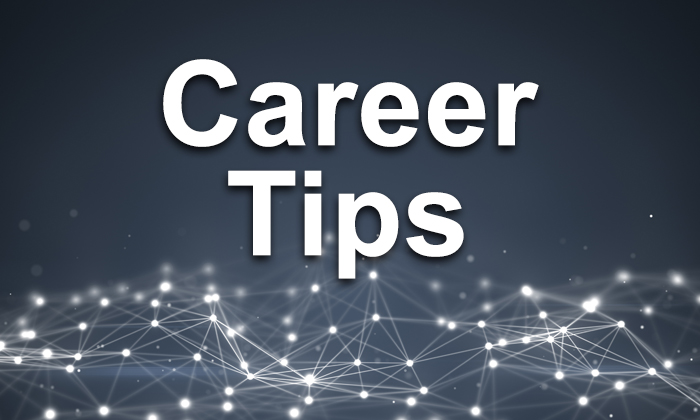Guest post by Bob Dolan
In a highly competitive market it is important to distinguish yourself. To do so, you need to create your personal brand. While a “brand” might sound like something that only applies to a commercial product, this is just another way of saying your message should be clear so people understand who you are, what you stand for, and what skills you bring to your profession. Developing your personal brand may help to enhance your professional opportunities today and in the future, and your brand can grow as you develop as a professional. Creating your own brand will help you shape people’s initial impressions of you, and first impressions are lasting.
Things to consider:
- How do you distinguish yourself?
- How do you want to present yourself to your target audiences, including others in your profession?
- How do you get your message out?
To begin, identify the top skills that you want potential employers to know you have. Consider the following:
- Behavioral – Working in a team/collaborative environment, Leadership, Conflict resolution
- Achievements
- Research skills
- Verbal/written communication skills
- Technical – discipline-specific skills/tools
How do you get your message out?
- Written – Resume/CV, Cover Letters, Research and Teaching Statements
- Verbal – Interviewing and Networking
- Virtual – LinkedIn, Website, other Social Media
All three methods should deliver a consistent message!
Written
Resume/CV, Cover Letters, Research and Teaching Statements
Your written communications are often what people see first. Whether you are applying for a faculty position, an industry job, a grant or attendance at a conference, your writing will precede you.
- Resume/CV – These documents should be focused on the information needs of the readers. Your Resume/CV serves many purposes. It is a marketing tool that highlights your skills, attributes, and accomplishments, and it must be easy to read.
- Cover Letters – This document is generally one page in length. It includes an introduction, followed by a message that aligns with your audience, followed by your closing statement. It allows you to express how your skills, interests, and experiences meet the needs of the position, both technically and behaviorally, and certainly will highlight your ability to communicate in written form.
- Research and Teaching Statements – These documents will always accompany an academic job application. The research statement provides you with the opportunity to deliver a more in-depth explanation of your work that is only briefly mentioned on your CV. Often this document has a past, current, and future component that highlights your history, your growth, and the impact of your research in the future. Your research statement will also highlight your collaborations and ability to get funding, if need be. Depending upon the lab/department you are targeting, this document should be tailored to align with the reader. Much like the cover letter, it will highlight your ability to communicate in written form. The teaching statement will be shorter than your research statement (generally 1-2 pages) and will highlight your ability to teach certain undergraduate and graduate courses. Often times it begins with your teaching philosophy and how you would make a positive impact on students. This document may also include a diversity statement to highlight how you would attract underrepresented minorities into your lab/classroom.
Verbal
Interviewing and Networking
How you talk to people, and what you say, should be consistent with your intended message.
- Interviewing – Interviews vary by institution/industry/company. For PhDs there is often a presentation component of the interview process. These can last anywhere from 30-60 minutes and must convey your skills and credibility to the audience. There will also be one-on-one sessions where you will be expected to answer questions about your abilities. One of the most common questions is “Tell me about yourself”, or “Tell me about your research.” A recommended strategy is to research the lab/department; know what they do, know what they want, and create a response that shows you fit their environment. Consider this response structure:
- I am a…
- With expertise/experience in…
- I have had project work on, led teams, had internships…
- My strengths include skill, skill, skill
Here is an actual response from a postdoctoral scholar, and many of the skills were listed in the lab’s job description:
“I am a postdoctoral scholar at MIT with expertise as an analytical biochemist specializing in chemical analysis methods.
My areas of interest are in the synthesis and characterization of metallic nanoparticles and improved diagnostic ability in cancer.
I have worked in several labs and have led multidisciplinary teams to design photosynthetic system-based bio solar cells. The team screened antibodies targeting markers for tropical diseases for use in an efficient platform for diagnosis. We also generated four serotypes of dengue NSI protein by gene expression of transfected RNA into eukaryotic cells.
I also have additional skills and am proficient in the execution of biochemical assays, including ELISA, western blot, cell-based assays, flow cytometry, FACS, and HPLC”
- Networking – Networking is something that we do every day, yet sometimes may not realize it. Every work conversation you have is a way of learning and aligning with the people you work with, and an opportunity for you to share your contributions to your team. Networking is a huge part of conferences because you meet people from other institutions along with potential future collaborators and employers.
Virtual
Lab/Company Website, LinkedIn, and other Social Media
Your online presence is becoming a major resource for employers. If your lab/department has a website, ensure that your profile is rich with details of your work. For industry positions, Jobvite survey (n=800) reported the following percentages for employers who use social media:
- Searching for candidates = 96%
- Contacting candidates = 94%
- Following potential candidates = 93%
- Vetting candidates pre interview = 92%
- Posting jobs = 91%
Social media is a fundamental shift in the way we communicate. In general, you should use caution and be professional. LinkedIn dominates social media recruiting. When developing your profile, consider including the following:
- Your full name
- A professional photo
- Summary that highlights your 4-5 major skills/contributions
- Detailed list of accomplishments – current and previous institutions
- Links to publications
- Any patents/trademarks
- Volunteer work
- You should also join groups and follow institutions that align with your profession
Your Branding strategy— written, verbal, and virtual—should differentiate you from others in your field and should position you clearly in the minds of others. By focusing on your message and your mission, you will project credibility, develop loyalty in your profession, and create connections to others in your field.

Bob Dolan
About the author: Bob Dolan provides career counseling and professional development workshops for the Postdoctoral Scholars program at MIT. He is a Certified Job Search and Career Transition Consultant with experience in the field of Career Management since 2001. Before joining academia, Bob had a private Career Consulting practice and worked with clients across multiple industries, as well as providing career consulting services for a global Career Management firm.













